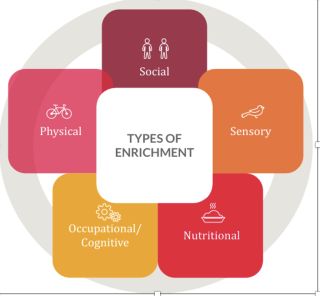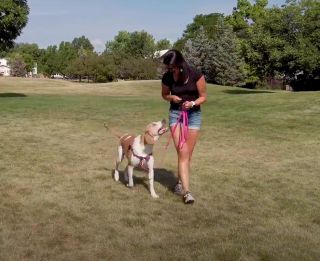Animal Behavior
Making Dog Training Enriching, Fun, and Positive
Having a Ball: How you and your dog can have a positive mindset during training.
Updated May 14, 2024 Reviewed by Lybi Ma
Key points
- It's essential to understand the psychology behind positive and effective dog training.
- A shared positive mindset between a human and their dog is critical for effective training.

By Mary Angilly and Marc Bekoff, Ph.D.
“Playing interactive games with dogs—like fetch, tug, and hide-and-seek—is the fast track to off-leash reliability. For some dogs, playing games becomes a passion that may rival walks, sniffing, and dog-dog play. All three games increase a dog’s desire to approach and stay close, greatly facilitating teaching—off-leash following and healing, and hence, loose-leash walking.”—Ian Dunbar, Barking Up the Right Tree, P. 197.
Numerous people seek out dog trainers for many different reasons. Because anyone can claim to be a dog trainer or teacher, it's essential to carefully choose a trainer who has your dog's best interests in mind and only uses positive, do-no-harm, and force-free methods.1,2 Dog training can lead to an increase in enrichment and choice for a dog; having a dog enjoy more freedom and feeling safe. But why is there so much focus on the end goal, rather than the process when training itself can be a form of enrichment? This essay was written with force-free dog trainer, Mary Angilly.
The Benefits of Enrichment
Enrichment refers to a process for improving the environmental and behavioral care of confined animals (companion dogs fall in this category) within the context of their behavioral needs.

There are a variety of benefits of enrichment, including but not limited to helping an individual combat the effects of stress, encouraging species-typical behaviors, allowing more choice over the individual’s environment, and preventing the development of abnormal behaviors (for example, stereotypes).
There are different types of enrichment and they often overlap in multiple capacities: social, physical, sensory, occupational-cognitive, and nutritional.
Training is most certainly a form of enrichment, but only if it’s fun and fulfilling for the individual participant. Here are some ideas for setting ourselves up for success when training with dogs.
As with all things dog, here are general suggestions that should be tailored to each individual’s needs.
- Take time to play. Have fun. Emphasize building the habit of seeking joy and desire while training. If something is fun, you’ll want to keep doing it. If you treat training as a chore to slog through, your dog likely will as well. I encourage dog guardians to train with enthusiasm (be lively and generous with praise and happy talk), great motivators, and to keep sessions short with a lot of breaks for play in between. (See also Is a Bad Dog Really a Bad Dog?)
- Don’t be a perfectionist. There will be times when your dog won’t get things right or do what you’re hoping. It can feel frustrating when this happens, but nothing takes away the desire to learn more than an angry teacher; try to give your dog (and yourself) grace, and take a break from training when things aren’t feeling good for you or your dog.
- Make success easy. It’s tempting to rush to the end goal, and request a specific skill or behavior a dog hasn’t acquired yet, but this sets up a dog to fail and both dog and trainer to feel frustrated. Train with a plan. Start with what your dog can do, and gradually increase difficulty at levels your dog can achieve. Many attempt errorless learning but at the minimum, do your best to prevent your dog from making mistakes. This is your responsibility as the trainer, not your dog’s.
- Focus on the positive. Humans are hardwired to be negatively biased; it’s easy to unravel and catastrophize when a training session doesn’t go as well as planned. A not so great session or two is likely not as detrimental as you think. Consider logging or recording your sessions, this can help you remember what’s going right more objectively.
- Be patient and take your time. “I need my dog to be trained by X time” is a statement I’ve heard more times than I can count. Unfortunately, that’s not how training works. Deadlines create pressure, which creates rushing, which makes training fall apart. Take your time when training; be patient and present. Learning, teaching, and training don’t occur in a linear progression, which may not agree with our expectations or desire. Slow and steady is what will be more beneficial in the long run.
- Don’t pressure your dog. “Sit. Sit, I Said Sit!” Stepping toward your dog in a threatening manner is not helpful. Instead of rapidly escalating to repeating yourself and then physically pressuring your dog, wait a moment and give them time to think and process your request. If they’re still not responsive, then it’s time to evaluate what you’re asking, when, and how. Watch a dog’s body language closely if you see them being pressured like this; it’s likely this is stressful for them.
Some practical take-home messages

Instead of looking at training as a means to an end, we would be better served to focus on its function as a form of enrichment and a way of improving our relationships with our dogs. If training is fun for a dog, it will therefore be rewarding and they’ll want to train. If they are active, enthusiastic participants in their training sessions, and we are too, it can increase the human-dog bond, and be rewarding for all involved—“Wow, look what my dog and I can do.”
It's usually pretty simple to get your dog to do something or not do something that you desire. Making it fun and a two-way ongoing negotiation is the best and only way to go.
References
1) Dog Training's Dirty Little Secret: Anyone Can Legally Do It; Choose a Dog Trainer as Carefully as You Would a Surgeon
2) Dog Training: Blending Science With Individual Personalities; The Biopsychology and Practice of Positive Dog Training; The Psychology and Art of Positive "Do No Harm" Dog Training; "Bad Dog?" The Psychology of Using Positive Reinforcement; Science Shows Positive Reward-Based Dog Training Is Best; Canine Anthropology: A Major Shift in Dog-Human Relationships,


